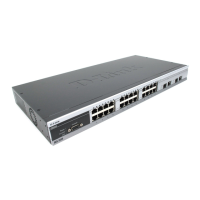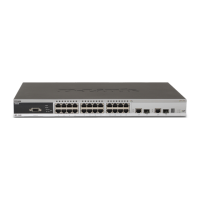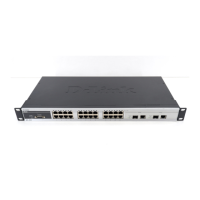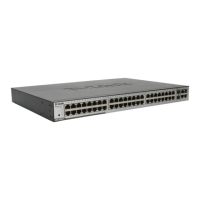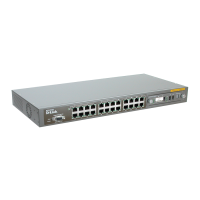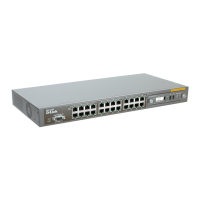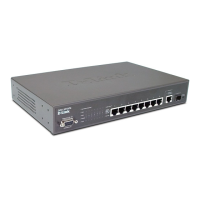DES-3550 Layer 2 Fast Ethernet Switch User’s Guide
78
The following parameters can be set:
Parameter Description
From/To
A consecutive group of ports may be configured starting with the selected
port.
Admin State
This pull-down menu allows you to Enable or Disable Port Security (locked
MAC address table for the selected ports).
Max.Addr(0-10)
The number of MAC addresses that will be in the MAC address forwarding
table for the selected switch and group of ports.
Mode
This pull-down menu allows you to select how the MAC address table
locking will be implemented on the Switch, for the selected group of ports.
The options are DeleteOnReset, DeleteOnTimeout, and Permanent.
Click Apply to implement the changes on the Switch.
QoS
Understanding QoS
The DES-3550 supports 802.1p priority queuing. The Switch has four priority queues. These
priority queues are labeled as 3, the high queue, to 0, the lowest queue. The eight priority tags,
specified in IEEE 802.1p are mapped to the Switch’s priority tags as follows:
•
Priority 0 is assigned to the Switch’s Q1 queue.
• Priority 1 is assigned to the Switch’s Q0 queue.
•
Priority 2 is assigned to the Switch’s Q0 queue.
• Priority 3 is assigned to the Switch’s Q1 queue.
• Priority 4 is assigned to the Switch’s Q2 queue.
• Priority 5 is assigned to the Switch’s Q2 queue.
• Priority 6 is assigned to the Switch’s Q3 queue.
•
Priority 7 is assigned to the Switch’s Q3 queue.
For strict priority-based scheduling, any packets residing in the higher priority queues are
transmitted first. Multiple strict priority queues empty based on their priority tags. Only when
these queues are empty, are packets of lower priority transmitted.
For weighted round-robin queuing, the number of packets sent from each priority queue
depends upon the assigned weight. For a configuration of 8 CoS queues, A~H with their
respective weight value: 8~1, the packets are sent in the following sequence: A1, B1, C1, D1,
E1, F1, G1, H1, A2, B2, C2, D2, E2, F2, G2, A3, B3, C3, D3, E3, F3, A4, B4, C4, D4, E4,
A5, B5, C5, D5, A6, B6, C6, A7, B7, A8, A1, B1, C1, D1, E1, F1, G1, H1.
For weighted round-robin queuing, if each CoS queue has the same weight value, then each
CoS queue has an equal opportunity to send packets just like round-robin queuing.
For weighted round-robin queuing, if the weight for a CoS is set to 0, then it will continue
processing the packets from this CoS until there are no more packets for this CoS. The other
CoS queues that have been given a nonzero value, and depending upon the weight, will follow
a common weighted round-robin scheme.
Remember that the DES-3550 has 4 priority queues (and four Classes of Service) for each
port on the Switch.

